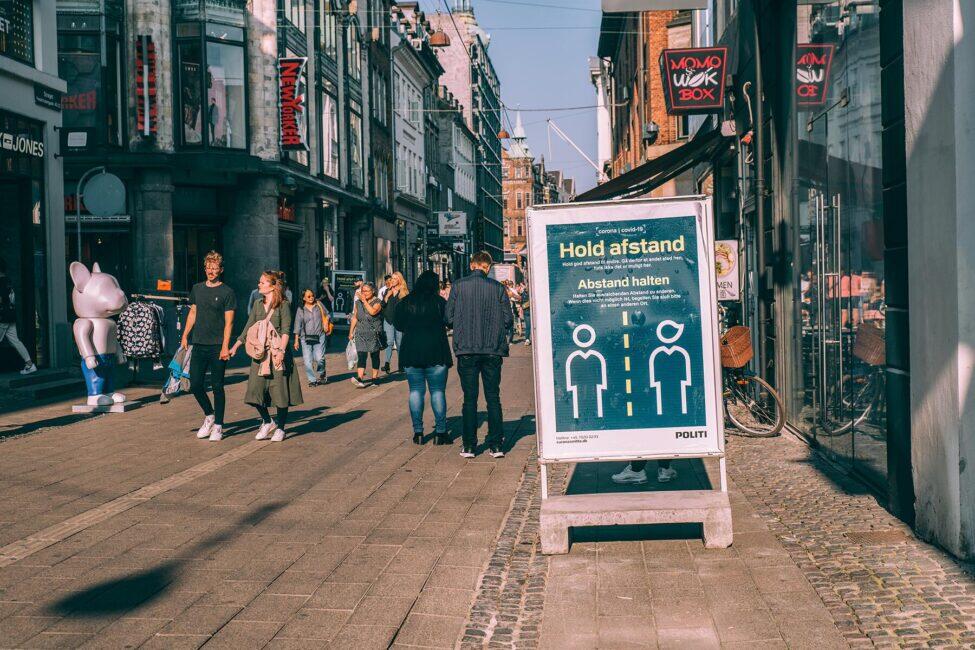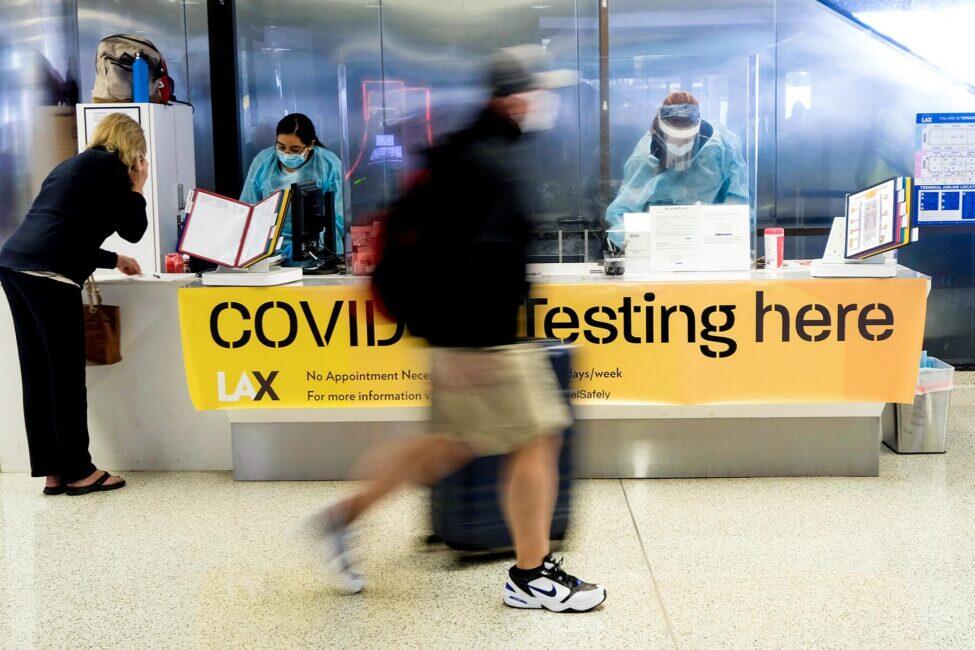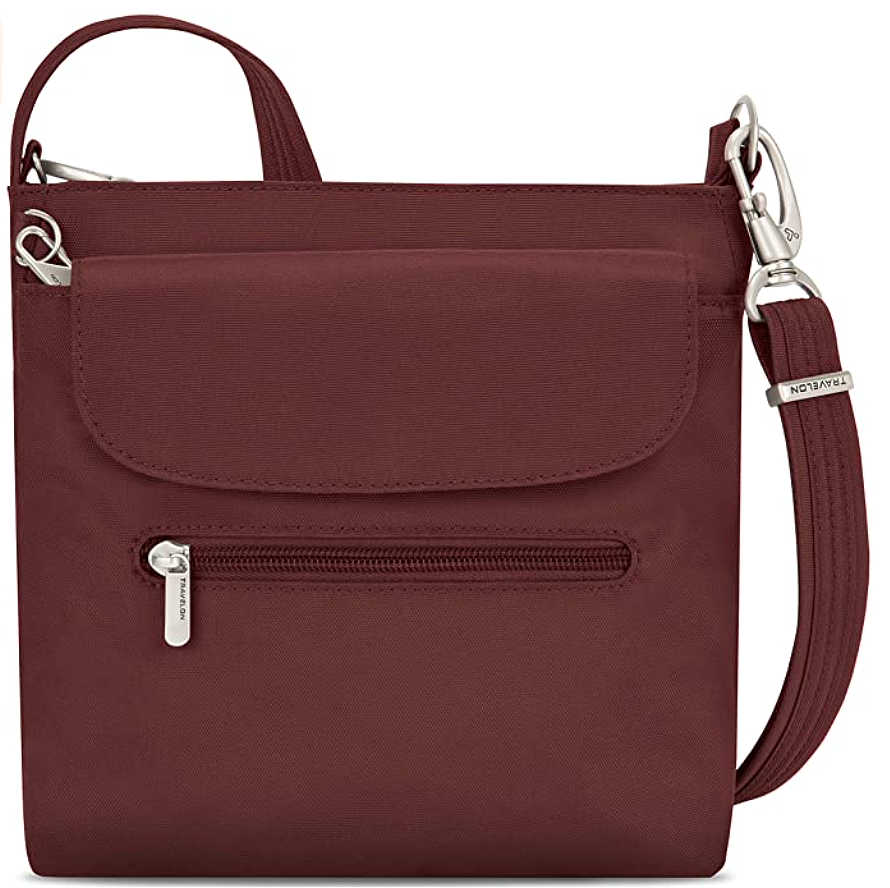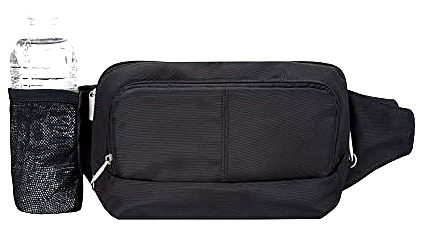Should You Cancel or Change Your Europe Trip Due to the Delta Variant?
As COVID cases rise and the Delta variant spreads, here’s everything you need to know about traveling to Europe right now.
Rising COVID-19 vaccination rates—not only in the U.S. but around the world—renewed hope that going on vacation no longer meant taking your life (or anyone else’s) in your hands. But then came the Delta variant.
Delta is as contagious as chickenpox, and that means COVID cases are multiplying rapidly. Restrictions to prevent further spread follow in its course. While it is still possible for Americans to travel to Europe, you need to be prepared to show your vaccination and testing status, wear a mask to prevent further transmission, and be flexible for frequently changing rules.
To help your travel planning, here’s an overview of where U.S. passport holders can travel for tourism in Europe now. Being fully vaccinated is needed for entry into some countries and reduces or eliminates testing in others. If you’re not fully vaccinated, quarantine may still be necessary. Be sure to check your destination’s current requirements before you book your plane ticket, plus a few days before your departure so that you’re prepared for any changes.
Top Picks for You



Recommended Fodor’s Video
What to Know About the Delta Variant
Because the Delta variant is so contagious, the precautions that worked for other variants are less effective. If you’re fully vaccinated, you’re unlikely to be hospitalized or die from COVID, but you could still get sick. Health experts are studying the brain, heart, lung, and joint damage that long COVID can cause in order to determine the chances people can develop it, even if their initial COVID case was mild.
The greater concern about traveling is that being fully vaccinated doesn’t prevent you from carrying the virus and transmitting it to others—particularly kids and immunocompromised people who are unable to be vaccinated, as well as people who don’t yet have access to the vaccines.
Though many officials have been reluctant to accept it, the virus that causes COVID-19 is airborne and is mainly spread by breathing and talking, often without the person realizing they’re infected. Think of COVID like cigarette smoke spreading indoors: it wafts around plexiglass barriers and beyond six feet from the person who exhaled it, and it can hang in the air for hours. Too many jurisdictions emphasize deep cleaning and hand hygiene despite little evidence for transmission by touching contaminated objects.
Whenever you’re indoors and in crowded areas outdoors, it’s important to wear a well-fitting mask. That means a KN95 mask or a MyGo2Mask with its graphene oxide lattice structure. If you don’t have either, wear a fabric mask on top of a surgical mask to minimize the gaps where air can escape and enter. Wearing a mask will prevent you from transmitting the Delta variant and help minimize you breathing it in and getting infected. Masks are required by law in many European jurisdictions.
What to Consider Before Traveling to Europe
The State Department and CDC provide both country-specific travel advisories and border entry requirements. European countries on the CDC’s lowest-risk level 1 list include Albania, Bosnia and Herzegovina, Bulgaria, Hungary, Kosovo, Lichtenstein, Moldova, North Macedonia, Poland, Romania, and Slovakia.

Karen Maze
The CDC recommends non-vaccinated travelers avoid the countries it classifies as level 3, which includes Belgium, Denmark, Estonia, Finland, France, Iceland, Italy, Latvia, Lithuania, Luxembourg, Montenegro, Norway, Slovenia, Sweden, Switzerland, and Turkey. Nonessential travel to level 4 countries like Greece, Ireland, the Netherlands, Portugal, Spain, and the U.K. is not recommended at this time.
The E.U. aims to have a common approach to travel, but member states can make their own decisions on the rules to enter their borders. The E.U. categorizes regions by risk based on case counts per capita and test positivity rate and discourages travel to areas classified as red (high risk) and dark red (very high risk). The E.U. recommends that areas classified as green (low risk) have no COVID-related restrictions on free movement. In early August 2021, most western European countries are classified as red or dark red. Eastern and northern European countries are generally classified as green.
With the Delta variant rapidly increasing case counts, you should assume COVID rules will change accordingly, both at borders and within countries. Some destinations, like Belgium and France, classify countries according to the number of cases there. If cases continue to rise in the U.S., entry rules for Americans might change.
Many European countries want proof you’ve had a full course of vaccines at least 14 days prior to your arrival or want proof of a recent negative PCR or antigen test. Some want both. Check details carefully, particularly for the timing window of your COVID test, including whether it’s a count of hours before departure or before arrival. You might also need to take a test on arrival, often at your own cost. If the results are positive, you will likely need to quarantine at your own expense.
Some countries allow proof of recovery from COVID during the last 12 to 180 days—it varies by country—as a replacement for testing or vaccination requirements. Children are exempt from some COVID requirements, but each country has different age cut-offs.
Also, keep in mind that some countries require you to have travel health insurance that covers COVID-19. To enter some countries, like Croatia, add proof of your paid accommodation to the list of documents you need to bring.
Regardless of where you decide to go, winging it is no longer as easy as it was before the pandemic. Due to reduced capacities, tickets to Europe’s best attractions are harder to come by than usual. If you have your heart set on seeing Barcelona’s Sagrada Familia or the Louvre, buy your tickets well in advance. Tiqets is a new Dutch ticketing platform that can make booking those tickets easy, with free cancellation options.
Countries Requiring Vaccination Upon Entry
Bosnia and Herzegovina, Finland, Malta, and Slovenia are among the countries giving the green light for fully vaccinated people. Travelers from some U.S. states may face additional restrictions for Malta. Note that Slovenia allows proof of recent COVID recovery in lieu of vaccination.
To travel to Finland, check the Finnish Border Guard website and use the FINENTRY system. Fully vaccinated travelers can enjoy Finland without the need for a COVID test. For those not vaccinated, border entry is limited to essential travel. Finland is an ideal destination for safe outdoor spaces with 40 national parks and a forested area covering almost 80% of its land. Thanks to jokamiehen oikeudet (Everyman’s Rights), anyone living in or visiting Finland has the freedom to roam the countryside and natural areas as long as they treat them with respect.
Countries Requiring Vaccination to Avoid Quarantine
Several European countries waive requirements for additional testing and quarantine for fully vaccinated travelers. These countries include Estonia (you’ll need your vaccine lot number, and non-vaccinated travelers must quarantine for ten days), Germany (you’ll need a paper copy of your vaccination certificate, and unvaccinated people need to quarantine five to ten days), Iceland (if you’re unvaccinated, you’ll need three tests plus a five-day quarantine), Ireland (unvaccinated travelers need a negative test and a five-day self-quarantine), Lithuania, Poland, and Romania (14-day quarantine for unvaccinated travelers; kids 3 to 16 need a negative PCR test).
Countries Requiring Both Vaccination and a Negative COVID Test
If you want to avoid quarantine in destinations like Sweden and the U.K., you’ll need to be both fully vaccinated plus have a negative COVID test. As of August 2nd, fully vaccinated travelers from the U.S. no longer need to quarantine in England or Scotland. However, they do need to test negative plus prove U.S. residency. If you aren’t fully vaccinated, be prepared for a hotel quarantine of 10 days and three different COVID tests (three days before departure, one on day two, and another on day eight).
Countries Requiring Proof of Vaccination or a Negative COVID Test
For many European countries, you can substitute one (or more) negative COVID tests for vaccination status. Medical certification showing recent recovery from COVID can replace those requirements too. Check timeframes for when the clock starts for vaccination, testing, and COVID recovery, as they differ by country. Keep in mind that if the risk categorization of the U.S. changes, entry requirements will change too. France, for example, will require both vaccination and a negative test if it moves the U.S. back to orange status.
Countries requiring either vaccination or negative testing or certified COVID recovery include Austria, Bulgaria, Croatia, Denmark, France, Greece (if you test positive in a random test, you’ll have to go to a quarantine hotel), Italy, Luxembourg, Moldova, Monaco, Switzerland, and Turkey.

Copenhagen Stock
As an example, Denmark is open to fully-vaccinated travelers from OECD countries, including the U.S. The U.S. is currently designated as a yellow country, which means Americans need proof of vaccination to enter Denmark or a negative test prior to and on arrival. Everyone needs COVID credentials to enter indoor spaces like restaurants in Denmark. If you’re worried your U.S. vaccination card doesn’t look official enough (Danes have a “Corona passport”), a negative antigen test is sufficient within the country and there are free testing centers with turnaround times between 15 and 30 minutes. Denmark is an excellent destination for COVID-safe outdoor activities—you could cycle the Tour de France route in advance of the 2022 race (Copenhagen is hosting the start next year), hike the national parks, and even go on a “forgotten giant” treasure hunt for giant trolls.
Countries Where Vaccination Isn’t Needed for Entry, But COVID Credentials Are Needed for Activities
The Czech Republic is unusual because travelers from low-risk (green) countries (which currently includes the U.S.) can skip most border restrictions. But, you will need a negative COVID test or vaccination credentials in order to participate in typical tourist activities, including checking into hotels. Travelers need to complete a Passenger Form for entry, but there’s no need for COVID testing or self-isolation if you’re fully vaccinated, under the age of six, or can prove you’ve had COVID-19 in the last 180 days.
However, to check into a hotel, eat in a restaurant, or enter indoor spaces, you’ll need a negative COVID test (which you may need to renew during your stay) or be fully vaccinated. As well, everyone needs KN95 or FFP2 masks for public transportation and shops, though cloth masks are fine for outdoors. Prague hotels offer a point system for free entry to museums and other Prague hot spots. You can explore outdoors at the Czech Republic’s newest UNESCO World Heritage site, the beech forests of the Jizera Mountains in North Bohemia.
Countries Only Requiring a Negative COVID Test
You don’t need to be fully vaccinated to visit these countries, but you do need a negative COVID test (either in advance or on arrival): Cyprus, Czech Republic, Greece, Latvia, Portugal (although the Azores and Madeira have stricter rules), Serbia, and Sweden.

Ringo Chiu
European Countries With Few Entry Restrictions
Some countries have minimal COVID rules. You might be checked for symptoms at the border, complete a form (sometimes in advance, sometimes on arrival) attesting to being symptom-free and providing your contact information, or may be subject to a COVID test on a random basis. Other than that, you’ll face few restrictions like proof of vaccination or a negative COVID test.
Currently, these countries include Albania, Belgium (but if the U.S. changes from orange to red categorization, you’ll need a PCR test), Hungary (but Americans can’t arrive by air), the Netherlands, North Macedonia, Romania, and Spain.

Martin Silva Cosentino
You’ll need to register on the Spain Travel Health portal or SpTH app and get a Q.R. code for travel to Spain. Spain categorizes countries by risk, and, currently, Americans traveling directly to Spain from the U.S. need neither vaccination, a negative test, nor quarantine. However, travelers from some countries do, and the U.S. could be put back in that category with little notice. Consider a trip to Valencia—its website details the COVID situation in the city. Valencia is home to paella and is Spain’s 2021 culinary capital. It’s also the world’s first city to verify the carbon footprint of its tourist activity so that it can be carbon neutral by 2025. For exploring, there are 75 miles of beaches, 100 miles of hiking and bike paths, and the city has three UNESCO designations, including the 500-year-old La Lonja (Silk Exchange), which is celebrating its 25th UNESCO anniversary.
Hungary is open for tourism with few COVID restrictions, but it depends on how you enter the country. It’s possible to enter Hungary by land or water via Austria, Croatia, Romania, Serbia, Slovakia, or Slovenia. For example, a cruise ship passenger can enter via Austria or Germany; enjoy Hungary’s UNESCO sites, thermal spas, and historical sites along the Danube; and then depart from the Budapest airport. The border isn’t yet open for U.S. passport holders arriving by air (currently, only visitors with an E.U. immunity certificate can fly into Hungary).
Should you be concerned about monkeypox ahead of travel this summer?

Should you be concerned about monkeypox ahead of travel this summer?
Jun 1, 2022 • 4 min read
Just when you thought it was safer to get back on an airplane comes word that there is a potential outbreak of something called monkeypox. You’re not alone in wondering what this ominous-sounding virus is, how to hopefully avoid contracting it, and if this is going to change your summer travel plans.
On May 6, doctors confirmed that a British citizen who had arrived from Nigeria two days earlier had symptoms of monkeypox, a virus that manifests itself a week or two after exposure. Symptoms include skin rashes, fatigue, headache, high fever, shivering, swollen lymph nodes and muscle pains.
What is monkeypox?
Monkeypox is a virus that is transmitted through bodily fluids, direct contact with skin lesions or through clothing, towels or bedding that has come in contact with bodily fluids. It can also be transmitted through respiratory droplets, but such transmission is thought to happen after extended exposure. The illness generally lasts two to four weeks.
The Centers for Disease Control and Prevention, or CDC, has recently issued a monkeypox alert for travelers, raising the risk classification from level 1 (Practice Usual Precautions) to level 2 (Practice Enhanced Precautions). If it gets to level 3—and it’s not there yet—it would be a warning for people to “avoid nonessential travel.”
“Even though the alert is disconcerting, especially as we continue to face ongoing COVID concerns, the risk to the general public remains extremely low at this time,” said Holly Phillips, MD, Board Certified Internist in practice in Manhattan. “Monkeypox does not spread as readily as COVID or many other common viruses and the highly visible physical manifestations could lead to faster and more effective quarantining of affected individuals helping to control spread.”
Get trusted guidance to the world’s most breathtaking experiences delivered to your inbox weekly with our email newsletter.

The virus is detected in African monkeys and spread to humans through biting and scratching © Lidia fotografie / Shutterstock
Are there destinations that are higher risk of monkeypox?
According to the CDC, monkeypox is more common in central and western Africa, particularly in tropical forested areas. “Cases are rare among travelers, but have occurred,” according to the CDC website.
Dr. Phillips added, “Travelers should be aware of the illness, how it is spread, and be careful to avoid known contacts. However, it’s not necessary to edit or cancel travel plans at this time.” Monkeypox is spread from animals to humans through being bitten or scratched by an infected animal. It is also spread through direct contact with bodily fluids from an infected person and through contact with materials that have touched bodily fluids or sores. It is important to ensure that hotel bedding and towels are clean.
What to do if you think you catch monkeypox when traveling
The CDC is cautioning that anyone who has recently traveled to central and west African countries and has symptoms to contact their healthcare provider immediately. The CDC also recommends that travelers should avoid eating wild game, particularly “bushmeat”; avoid contact with live or dead animals, particularly rodents; and keep a distance from people, particularly those with skin lesions.

Is there a vaccine for monkeypox?
According to the WHO website, there are several smallpox vaccines that are effective against monkeypox and there’s even a monkeypox vaccine that was developed in 2019. WHO is currently working with the manufacturer to improve access to the vaccine. But at the moment WHO and other health organizations are not yet recommending the general public try to get the monkeypox vaccine.
Most travel insurance policies will cover monkeypox treatment but be sure to read through all the fine print on your policy or call the travel insurance company to find out before your trip.
Before your summer travels begin, Dr. Phillips suggests making yourself aware of the signs and symptoms. “Don’t hesitate to get checked out if you think you may have been exposed or if you develop any unexplained skin symptoms,” she said. “Overall, being informed and aware of local illnesses and conditions, monkeypox and others, is your best protection during travel.”
Sustainable Escapes

This is Lonely Planet’s guide to the world’s best eco-friendly resorts and experiences. From eco-lodges with cutting-edge sustainability initiatives to tours designed to protect wildlife and empower communities.
Sustainable Escapes

This is Lonely Planet’s guide to the world’s best eco-friendly resorts and experiences. From eco-lodges with cutting-edge sustainability initiatives to tours designed to protect wildlife and empower communities.
Explore related stories
The 12 most unmissable things to do in Switzerland
No country has it all, but sensational Switzerland certainly comes close. Here are the 12 best things to do when you get there.
A reason to travel to Bergamo and Brescia in 2023: Italy’s new capitals of culture
Hit early and hard at the start of the COVID-19 pandemic, these cities have been chosen as a symbol of renaissance, hope and rebirth through culture.
US national parks will be free to enter this Friday in honor of Veterans Day
The National Park Service (NPS) will waive entrance fees at every site in the US on Friday, November 11.
Explore Germany for less than €50 a month in 2023 (slowly)
You can use busses, trains, and trams in Germany for less than €50 per month
A reason to travel to Hauts-de-France in 2023: Europe’s new region of gastronomy
Perfect for a gourmet getaway: this northernmost region of France was awarded the European Region of Gastronomy 2023.
Explore these 8 ‘haunted’ places in the USA
Ghostly encounters have been reported in many different locations. 8 places to go in the US for a spirited encounter.
What to eat and drink in Switzerland
Cheese, chocolate and rösti, oh my! Different regions of Switzerland draw on culinary influences from its neighbouring countries.
The 10 best beaches in England
England has beaches to spare, from golden Cornish sands to wild, untamed beaches on the edge of the Yorkshire moors. Here’s our pick of the best.
Why the Scottish Borders shouldn’t be overlooked
To explore Scotland away from the crowds, travel south to the Borders and start with these eight spectacular stops.
Worried about Pickpockets in Europe? Read These Tips and Tricks

Support TFG by using the links in our articles to shop. We receive a small commission (at no extra cost to you) so we can continue to create helpful free content. As an Amazon Associate, we earn from qualifying purchases made on Amazon in addition to other retailers featured on the blog. Thank you, we appreciate your support!
Don’t let the fear of pickpockets in Europe stop you from having a blast at your dream destination. With these tools and some preparation and vigilance, you’ll be sure to have a memorable and safe time!
Pickpockets in Europe: How to Stay Safe
Table Of Contents
Travel Fashion Help! A reader asks:
I haven’t traveled to Europe in ages, and my husband and I just booked a trip to London and Paris. I’m trying to be sensible about what I bring; I’m reading a ton about keeping valuables close, but also to buy bags that are slashproof to keep it safe from pickpockets in Europe. Do you have any safety advice for traveling to avoid pickpockets in London and Paris?
If you have never visited London or Paris before or thought about safety in Italy, then you might find yourself overwhelmed with the crowded streets and busy metro lines.
As with many major cities, the most common problem for tourists (or locals) is theft. In fact, pickpocketing in Europe is at an all-time high, with cities in Spain topping the list. Besides making sure you’re always aware of your surroundings, you also can take certain packing precautions when traveling Europe or other parts of the world.
We asked TFG readers for their top tips on how they keep their valuables safe from pickpockets in Europe. This is what they came up with.
Traveling to London , Ireland, Italy or Paris ? Be sure to read my e-books to learn everything about travel to these top destinations!
Pickpocket Proof Bag: Anti-Theft Purse
As you sightsee and travel in Europe, you will need to carry cash and credit cards, your phone, maybe a camera, too. One of our favorite ways to combat pickpocketing in Europe is with an anti theft purse.
These bags come in different shapes, sizes, and styles, so you are sure to find the perfect one for you!

Best Pickpocket Proof Bag: Travelon
Travelon makes TFG’s favorite anti pickpocket bags, and we love this classic messenger bag. When it comes to finding the perfect pickpocket proof bags, you’re going to want to with a trusted designer like Travelon.
The Travelon Anti-Theft Classic Messenger Bag has all the components of what you’re looking for in a purse if you’re worried about pickpockets in Europe: it’s a cross-body bag that’s slashproof, has locking compartments, and RFID-blocking card and passport slots.
Best of all, it looks like your average purse, meaning it doesn’t stand out!
Looking for the perfect anti theft bag for you? Take a look at our round-up of the best anti-theft travel bags for women !

Why are Crossbody Bags Great For Anti Theft?
Crossbody bags are one of the best ways to prevent pickpocketing because they allow you to keep an eye on your valuables. If you wear a crossbody purse, keep it in front of you at all times when you’re out and about. That way, you’ll be able to see your valuables, no matter where you are!
The Travelon Classic Mini is another great bag for when you’re looking for how to prevent pickpockets in Europe. Its convertible strap means that it can be either a crossbody or a shoulder bag, plus the strap can be attached to a post or a chair!

If you’re walking along the side of a road with your pickpocket proof bag, make sure you’ve placed the purse on the other side of your body — away from traffic. Having your bag on the opposite side of the road can help prevent roadside thefts.
If you’re not a huge fan of the synthetic bags built by Travelon, you could instead go with a leather crossbody bag . It will help you to both protect your valuables and look stylish!
Read more about why female travelers love cross body purses for travel!

How to Prevent Pickpockets: Use a Slash-Proof Bag
If you’re in a popular tourist area, chances are it will be crowded. This makes it an ideal hunting ground for pickpockets!
One of the ways pickpockets in Europe do their best work is by slashing or cutting a bag open. If you’re surrounded by a large group of people, this can be done quickly and without immediate notice. And by the time you do notice, your belongings are long gone!

Slash-proof bags come in various shapes and sizes, whether you’re looking for a shoulder bag, messenger bag, backpack, or crossbody bag. And they add a layer of security, to ease your mind when traveling through Europe.
The straps of slash-proof bags often have mesh metal built into them. Plus, most come with RFID blocking pockets that help prevent pickpockets from scanning your passport or credit cards!
Don’t carry your passport with you when sightseeing! Lock it in your accommodation!

Choosing a slash-proof and sturdy material is one of the best ways to protect your belongings.
In addition to the Travelon anti-theft purses that have great feminine styles, TFG readers recommend PacSafe slash-proof bags because they last years!
Or, if you’re more inclined to use a travel backpack, Travelon also makes a pickpocket proof backpack .
How to Carry Cash in Europe
Getting yourself the right purse isn’t the only precaution that you can take to prevent pickpocketing in Europe. You also can get an anti pickpocket wallet!

Hide Your Cash with a Secret Bra Wallet
Our most recommended alternative to a money belt is a secret bra wallet, which is the perfect anti theft device to keep your valuables safe. A secret bra stash attaches to your bra to keep small personal items safe, such as extra money, credit cards, or a hotel key.
When you go to the ATM machine, store the majority of your money in the secret wallet and place only the amount of money you’ll need for the day in your regular wallet.

Prevent Pickpockets with a Neck Wallet
For those days when you’re actively traveling (like those days spent on flights or trains) and need to carry all of your valuables, keep everything under your clothes using a neck wallet .
Neck pouches or neck wallets are perfect to hold your passport, credit cards, and cash. And if you’re out-and-about taking in more touristy sights, this anti-theft device can help you keep things away from pickpockets in Paris, London, Rome, or Barcelona.
TFG has a great roundup of our favorite neck wallets , plus some tips and tricks for the most effective ways to use them!

Traditional Anti Pickpocketing Wallet
While a neck wallet is a great anti-theft device, it won’t give you easy access to your items. Instead, you can keep a small amount of cash in a wrist wallet .
With a wrist wallet, you won’t have to pull out your neck wallet in public areas. You should never access any of your under-clothing anti-theft products in public, or in front of anyone . Pulling it out means alerting pickpockets to the fact that it’s there, which defeats the purpose of hiding your valuables under your clothing!
Watch this video to learn 10 anti-theft travel tips!

Other Anti Theft Products
Beyond purses and wallets, there are a few other great anti theft products that can help you keep your money and other valuables safe while you’re abroad (or even at home)!
A money belt is essentially a smaller, more secret fanny pack that you hide in front of your body under your shirt. It can hold your money, credit cards, and even your phone!
A travel underwear is perfect for avoiding pickpockets in Europe. These clever anti theft devices have secret pockets hidden all over for cards, money, hotel keys, and other valuables.
A pocketed scarf is exactly what it sounds like: a scarf with secret pockets in it to hide some of your favorite things that you keep with you during your travels (like your phone).
Or you can go with a tank top with secret pocket . Granted, there’s a zipper where the pocket opens, so it’s not exactly a “secret,” but it’s still a great way to avoid pickpocketing.
If you’re looking for clothing designed to protect your belongings, our readers share their recommendations for concealed pocket clothing!

Lock Your Luggage
If you are in a busy area and want to be cautious (like perhaps an airport or a touristy area), you can take the extra step of securing the zipper of your bag with a small padlock . Try to find something small and subtle. Having an obvious padlock on your backpack or bag could serve to make you more of a target!
A luggage padlock doesn’t guarantee that your luggage won’t be broken into. But it does help prevent opportunistic theft. Here at TFG, we recommend that you only buy a suitcase that has lockable zippers or a built-in locking system.
Please read my top ten tried and tested anti-theft travel tips for more information on how to properly use these items!
Watch this video for more tips on how to keep your stuff safe while traveling.
More Important Information to Prevent Pickpockets in Europe

Best Way to Avoid Pickpockets: Leave Valuables
No valuables, no problem! You can keep your stuff safe from pickpockets in Europe by not taking valuables with you while you travel! Some TFG readers even opt to leave their engagement or wedding rings at home for fear of losing them, forgetting them in their hotel room, or simply not wanting to attract any unwanted attention with their bling.
If there are valuables you simply cannot part with, leave them at home or at least leave them at the hotel room when you’re out sightseeing. Keep your valuables and passport locked away in the hotel. Make sure to leave at the very least one ATM card in the safe with your passport, so in a worst-case scenario, you still have access to your ID and money. Unfortunately, it does happen.
TFG highly recommends that you split up your cash and cards. The cash you need for the day should go inside your purse (preferably a pickpocket proof bag). Then stash additional “emergency” cash and credit cards in anti-theft items such as the bra stash . Everything else (including your passport) should stay safely tucked away inside your hotel safe or locked suitcase.
Hotel Safe Tip : Check your hotel safe as soon as you get into your room. If you have any issues with it throughout your trip, tell the hotel immediately.

Look Like a Local: Try Not to Stand Out
While locals aren’t immune from pickpockets in Europe, thieves do tend to target tourists more often. You can avoid unwanted attention by steering away from overly touristy places. Plus, you’ll want to make sure your anti theft devices aren’t obviously anti theft, because locals wouldn’t carry an “anti-theft bag.” Carrying a normal looking purse will help you blend in.
Also, most locals probably wouldn’t walk around with an outdoor backpack in the middle of the city. We love using backpacks to explore cities but choose a cute purse backpack that offers the convenience of a traditional backpack without making you stand out like a sore thumb.
Be Vigilant to Avoid Pickpockets
Ensure you’re extra vigilant on the metro and while walking on crowded, tourist-packed streets. No matter how distracted you get, do not lose sight of your belongings!
Refer to our packing lists so you can bring the right clothes and dress appropriately for the city style, weather, and your activities!

Are Fanny Packs Safe in Europe?
At TFG, we highly recommend a money belt over a fanny pack because they are smaller and built to be hidden. But fanny packs (or waist packs) can also help prevent pickpockets in Europe.
If you want a hands-free option for your travels and go with a fanny pack, make sure you wear the back in front of you. Wearing it behind you will make it easier for pickpockets. Travelon makes an anti theft fanny pack that is slash proof and has locking pockets.
What Destinations Should I Bring My Anti Theft Bag To?
While we know there tend to be issued with pickpockets in Europe, you should really make sure you have anti pickpocket devices with you on all of your travels. It’s better to be safe than sorry!
Do you have any tips on how to avoid pickpockets in Europe? Please share in the comments!
Source https://www.fodors.com/world/europe/experiences/news/cancel-change-europe-vacation-covid-delta
Source https://www.lonelyplanet.com/news/monkeypox-travel-summer
Source https://www.travelfashiongirl.com/pickpockets-in-europe/